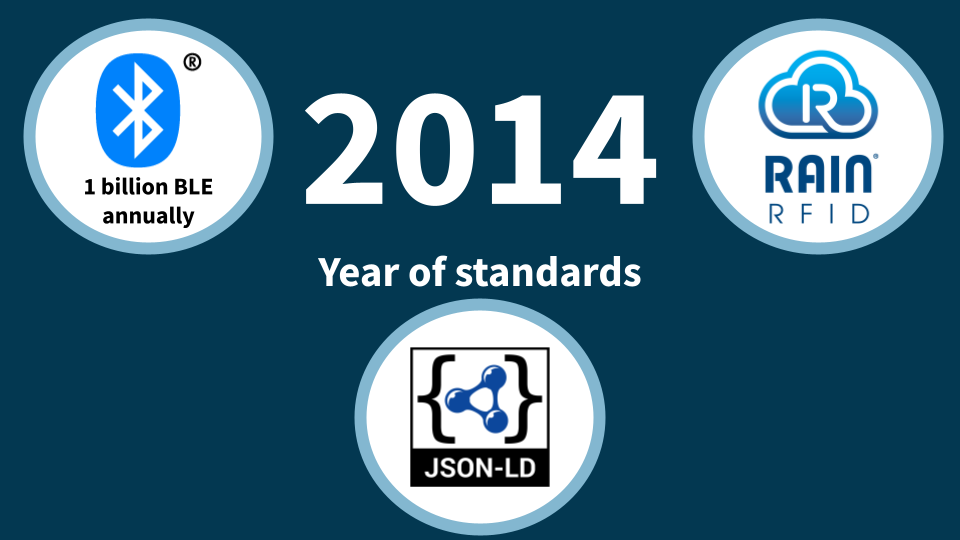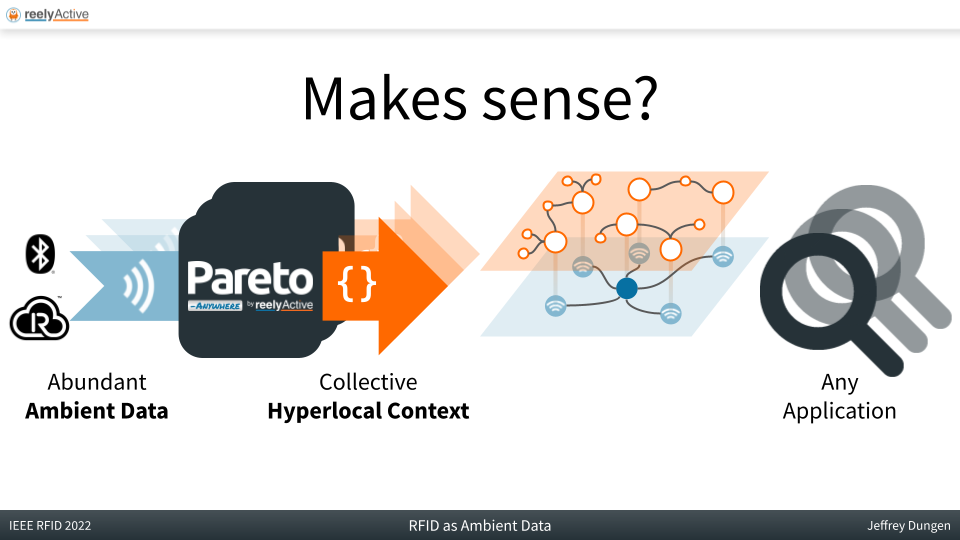When we first attended RFID Journal Live in 2013, reelyActive was not even a year old, and yet we proudly showed off the innovative real-time location system (RTLS) that we had rapidly developed based on our own proprietary active RFID (radio-frequency identification) hardware and reel technology. Back then, we were solving a hardware problem: offering hardware that was simple and accessible enough for any motivated developer to assemble into a solution.

Last week we attended RFID Journal Live 2022 and the co-hosted IEEE RFID conference on the eve of our tenth anniversary, and we proudly argued, in the tutorial that we presented, that RFID has become ambient data, with over 100 billion standard, radio-identifiable devices present throughout the spaces in which we live, work and play. Today we are solving a middleware problem: facilitating interoperability across vendors and technologies so that any motivated developer can assemble off-the-shelf parts into a solution.
Why did we transform from a proprietary hardware company to the stewards of the only open source middleware for context-aware physical spaces? In a word, standards.

In 2014 emerged three key standards:
- a long-range passive RFID standard with the founding of the RAIN Alliance
- a de facto active RFID standard with Bluetooth Low Energy exceeding 1 Billion annual device shipments
- linked, structured data (for digital twins) with JSON-LD becoming an official Web Standard
Since then there have been over 112 billion RAIN RFID tags produced and there are currently 5 billion Bluetooth Low Energy devices shipping annually. The problem of standard, accessible hardware is very much solved: we can identify and locate 100 billion+ “things” across the planet! Moreover, with Google embracing JSON-LD and Schema.org to represent anything as machine-readable data, all those things can be associated with web-standard digital twins!
So what’s the problem? In a word, interoperability. Discussions about overcoming the challenges of interoperability could be heard on both the industry and research sides of the 2022 conference, especially in the latter. And that is why the Pareto Anywhere open source middleware that we’ve been developing and continuously improving for years is so relevant: it enshrines interoperability as an open technology architecture. And in the era of walled gardens, Pareto Anywhere remains in a class of its own!

Today, our optimism for an open, interoperable Internet of Things has been renewed. Not only are vendors and researchers discussing the issue, things (no pun intended) are actually changing! This month alone, we’ve integrated with Wiliot (as we hinted we would at RFID Journal Live 2018) and have no fewer than 4 integrations with supportive RAIN vendors/technologies in the works, the first having already been validated end-to-end!
Incredibly, it took 8 years since the three standards independently emerged for us to be able to demonstrate them all working together harmoniously!
We’re glad to finally achieve that milestone—and arguably the first to openly do so—which is symbolic as this RFID Journal Live may well be our last. The industry conference, which celebrated 20 years, has largely fulfilled its mandate of connecting the vendors and prospective users of an emerging technology which is now well established. Instead, we’ll be keeping pace with the next wave of innovation coming from the IEEE RFID conference, with passive BLE and universal web resolvers for digital twins among the many research topics shaping the future of ubiquitous machine-contextual awareness.
See you at IEEE RFID 2023, and, for the usual suspects, expect a live performance of “As Long as you Read Me” by the Backscatter Boys.
